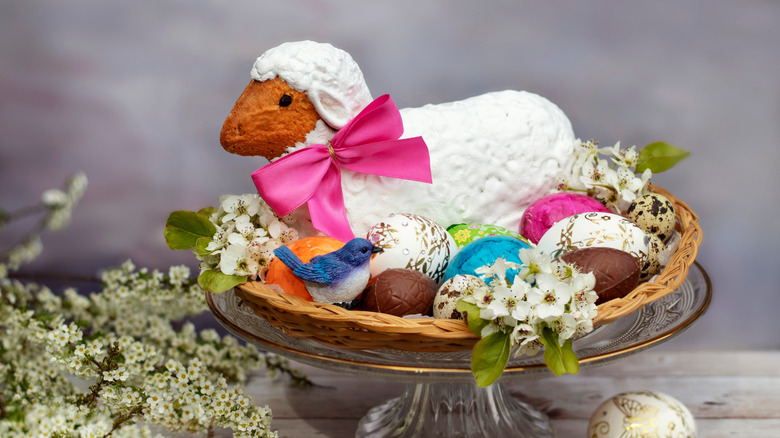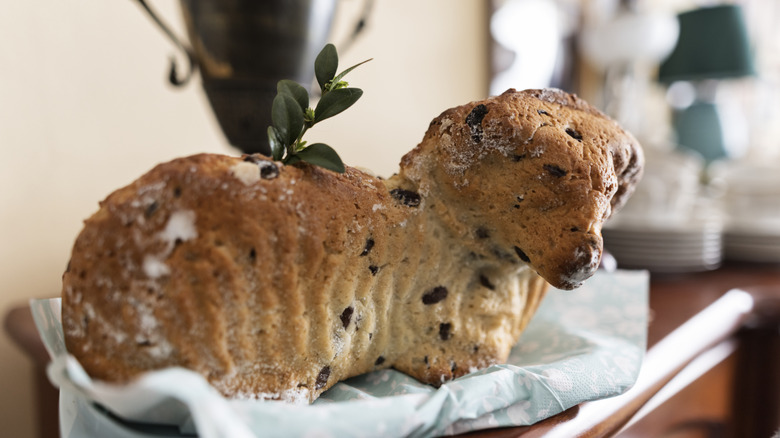The Nostalgic Lamb Cake Got Its Start From A Pagan Tradition
Every year, like any holiday, Easter brings a slew of unique food traditions. Some of us make special deviled eggs, others make meals like honey mustard-glazed ham. And of course, there is always tons of Easter candy involved too. Then there's the cherry on top: The stunning, sometimes difficult-to-make lamb cake, which is, as the name implies, a cake made into the shape of a lamb.
While the lamb cake is a widely recognized food symbol for Easter celebrations, not many of us know its true origins. Years ago, it was actually a Pagan tradition. Lamb cakes, as well as other dough effigies constructed in the shape of animals, were used as substitutes in rituals to avoid sacrificing animals. Much like the origins of the Easter candy tradition, the history of the lamb cake is a lot longer and more complicated than many would think. It isn't just where the cake comes from — it's also how it was originally made compared to the frosting-covered confection it is today.
The history of the lamb cake
The reason the lamb cake became connected to springtime as a whole was due to a specific Pagan ritual known as the rite of spring. Previously, it involved the sacrifice of a human virgin woman. However, this was deemed too brutal and it was changed to sacrificing a lamb or a goat instead. Eventually, this was further sanitized by replacing the live animal with a dough version.
There are several potential reasons why the lamb cake was later plucked from its Pagan roots and used during Easter. One reason is the symbology of the phrase "Lamb of God," which is a moniker for Jesus. There's also associations with Passover, which tells the story of Jews who painted their doorposts with lamb's blood during the plagues so God would "pass over" their homes and not take the lives of their eldest sons.
It would seem that the Pagan tradition of lamb cakes and Christian associations with lamb eventually crossed paths, and the symbolism of the unique pastry stuck. The Easter tradition in its more modern form first emerged in southern Germany, where it was known as "Osterlamm-kuchen." The cakes would be baked in a shaped metal pan, decorated with powdered sugar, then topped with a red ribbon around the neck. Through the years, decorations have only gotten bigger and bigger, with people adding lamb's wool in the form of buttercream or shredded coconut and colored jelly beans for the eyes and nose.

